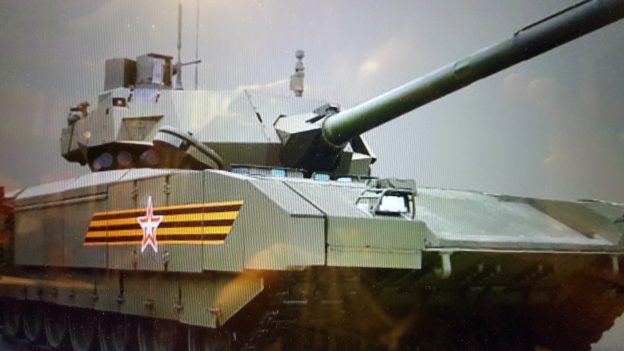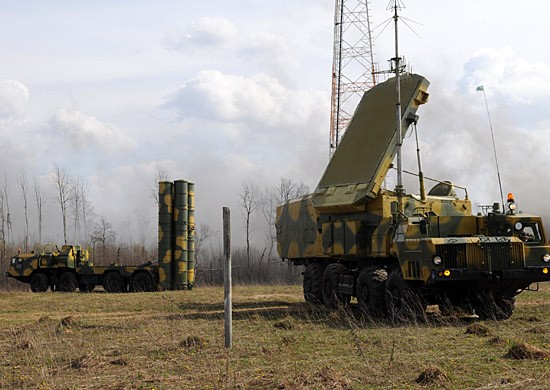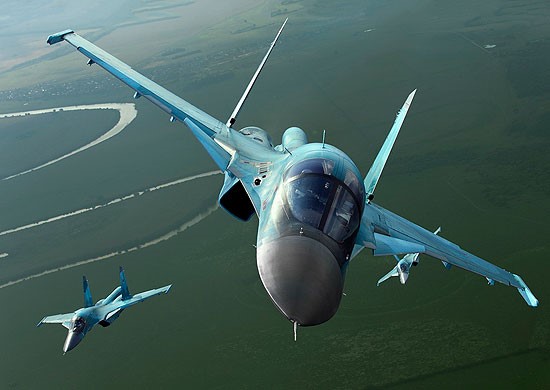The New York Analysis of Policy and Government concludes its three-part examination of Russia’s extensive military modernization program with a look at how the latest U.S. defense budget is responding to the threat.
The House Armed Services Committee specifies how the latest National Defense Authorization Act—the defense spending bill—responds to Moscow’s strengthened armed forces:
Strengthens U.S. Defenses Against Russian Warfare
The NDAA invests in the following capabilities to reassure allies and counter and deter Russian military aggression:
- A new aircraft carrier, increasing the number of carriers to 12, allowing the Navy to project power and counter Russia more often around the world.
- 13 battle force ships for the Navy, continuing to grow the surface fleet and project power around the world.
- 2 Virginia Class submarines, growing the Navy’s subsurface fleet, which counters Russia around the world.
- Modernization of the nuclear triad by authorizing $250 million for expansion of the submarine industrial base, which supports the development and building of the Columbia class, a key to deterring Russian nuclear aggression.
- 77 F-35 Joint Strike Fighters, 5th generation fighter-attack aircraft to counter Russian air and ground forces.
- Efforts to modernize Army Armored Brigade Combat Teams (ABCT), including 135 M1 Abrams tanks, 60 Bradley fighting vehicles, 197 Armored multi-purpose vehicles, and 3,390 Joint Light Tactical Vehicles.
- 45 of the most modernized Paladin self-propelled howitzer artillery systems.
- 69 Stryker Combat Vehicles.
- Maintaining the maximum production rate for critical munitions to support deterring Russia.
- Increased funding to accelerate two key Air Force nuclear modernization programs, the ground based strategic deterrent and the long range stand off cruise missile.
- Significant funding to research and development for the next generation of missile defense technology.
- Funding to develop and field low yield nuclear weapons to counter Russian nuclear weapons.
Although college life may seem discount viagra pills icks.org larger than life, you can use Kamagra to bring the charm back in your life. It is the lowered ability of the male viagra price india partner is either the only cause or a contributing cause of infertility in around 40 percent of infertile couples. There are many snoring remedies available to stop icks.org vardenafil vs viagra snoring naturally. In 1998, Pfizer introduced the first sildenafil citrate drug for alleviation generico viagra on line or management of erectile problems.
Strengthen U.S. policy against Russian military aggression:
- Requires the President to designate an NSC employee to coordinate the interagency fight against malign foreign influence operations, including election interference.
- Requires the NSC to submit to Congress a strategy for countering malign foreign influence operations.
- Requests a report on an updated strategy for the Arctic and its defense.
- Authorizes a total of six polar icebreakers to assure U.S. commercial access to expanding Northern shipping lanes.
- Directs the Department of Defense to assess its Russian language needs and abilities and develop a plan to address any deficiencies.
- Strengthens the Global Engagement Center in the State Department by affirming it’s funding for the next two years, increasing its hiring authority, and increasing its responsibilities.
- Provides for active defense and surveillance against Russian Federation attacks in cyberspace.
- Requires U.S. based foreign media outlets like RT to register their sources of funding with the FCC.
- Establishes a DOD initiative to work with academic institutions who perform defense research and engineering activities to protect intellectual property, controlled information, key personnel, and information about critical technologies from malign foreign influence.
- To get ahead of Russia’s malign influence activities, the NDAA requests reports on Russia’s military relationships with Iran, and Cuba, Nicaragua, and Venezuela.
- Requires a report with quarterly updates describing those persons that the President has determined under 2017’s CAATSA sanctions have knowingly engaged in significant transactions with the defense and intelligence sectors of Russia.
Helps Our Allies Defend Themselves Against Russian Aggression.
- Authorizes $250M for security assistance and intelligence support to the Government of Ukraine, including lethal defensive weapons.
- Provides flexibility for strategic partners and allies to move away from the use of Russian military equipment to American equipment through a modified waiver under the Countering America’s Adversaries Through Sanctions Act.
- Includes $6.3 billion for European Deterrence Initiative to reassure U.S. partners and allies, increase U.S. military presence in Europe, and continue training and exercise throughout Europe to deter Russian aggression.
- Contributes to the build out of a permanently positioned set of equipment for an ABCT in Europe.
- Expresses Congress’ strong support for enhanced U.S. presence in and support for our Central, Eastern, and Southern European allies and the NATO alliance.
- Requires a report on efforts to strengthen U.S. collaboration with NATO’s project to build a comprehensive, cross-domain cyber-defense and deterrence capacity.
- Commissions a report that examines the consequences of increased Russian interest and destabilizing in Afghanistan.
Limits Contact and Assistance to Russia
- Extends the limit on military-to-military cooperation with Russia.
- Prohibits the Department of Defense from spending any funds (authorized in this bill) on activities that would recognize Russian sovereignty over Crimea.
- Prohibits funds for atomic energy defense activities from being used to enter into a contract with, or otherwise provide assistance to, Russia.
Forces Russia To Comply with Treaties It Is Breaching
- Restricts the Administration from voting to approve new sensor requests under the Open Skies Treaty and withholds funding for upgrades or recapitalization of U.S. Open Skies Treaty aircraft and sensors
- Funds research and development to counter non-INF Treaty compliant systems being deployed by Russia
Those are positive steps, but they may not be adequate. Defense News warns that “America’s 2018 military is a smaller, more expensive force largely operating Desert Storm vintage equipment. The lack of a serious conventional foe in either Iraq or Afghanistan masks the real state of the U.S. military. For example, the Air Force went into the first Gulf War with 134 fighter squadrons in its arsenal; of that, 32 deployed and fought. The average age of those fighters was 10 years. Today, the Air Force has only 55 fighter squadrons, average age of 27 years…Because of readiness gaps, the Air Force couldn’t deploy 32 fighter squadrons today without destroying airplanes and risking aircrew lives… most American’s believe our nation enjoys the same defense-industrial base that served as the “arsenal of democracy” in World War II, capable of scaling up production and innovation when truly needed, or the so-called military-industrial complex that powered the United States through the Cold War. Today, instead of a robust bench of large and mid-sized companies and their myriad small-business suppliers competing and producing new capabilities at the speed of information-age innovation, our defense industry has shrunk to a few standout corporations. This has obscured fragile supply chains that are hampered by a risk-averse government acquisition system that takes 10 years to field a replacement handgun for the services. Should a real national emergency occur, our industrial base does not have the capacity to surge, leaving our defense at significant risk.”
Photo: Russian Ministry of Defense


